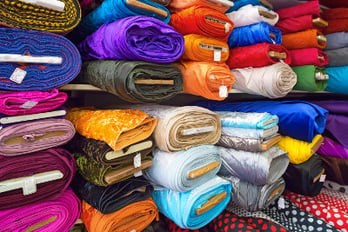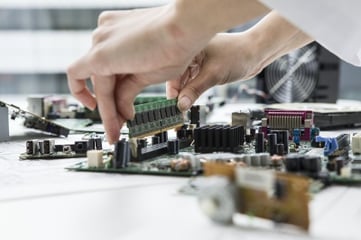This trend in China to counterfeit and substitute goes beyond the usual consumer goods and services. One of the significant dangers of supplying from China is the risk of your manufacturer using substandard or fake raw materials during production. In fact, most knockoffs in China are extremely similar in design to their original counterparts. They’re just constructed using inferior materials. As a buyer, how can you be sure that you are not getting what is essentially a knockoff of your own product?
Some of the biggest culprits are located within the tech industry. Technology firms have to be particularly careful with what they receive from suppliers, such as resistors and other electronic components. Here is how supplier verification can help you keep up with your product’s quality and avoid any low quality materials from making their way onto the assembly floor.
Set Up: Supplier Evaluation and Qualification
The first step to starting any business relationship, both at home and abroad, is knowing exactly who it is with whom you are doing business. If you are sourcing  from China, there are many different factories and vendors for virtually any item, which can limit transparency unless you can visit each supplier. Because of this you will rarely get the opportunity to “feel out” potential suppliers to decide if you trust them to be honest about the sources of their materials.
from China, there are many different factories and vendors for virtually any item, which can limit transparency unless you can visit each supplier. Because of this you will rarely get the opportunity to “feel out” potential suppliers to decide if you trust them to be honest about the sources of their materials.
Instead, you’ll want to carry out supplier verification through an audit of their factory to look at their internal structures and procedures. If you are buying electronic household appliances, for example, more than likely, the tooling factory is not producing the smaller electrical components themselves. Here are the 2 questions you then need to ask:
1. How do you decide where to buy your components?
Asking specifically where their components come from is usually a redundant move, because you probably won’t recognize any of the potential suppliers or if they are reputable or not. Instead, you want to see if the factory has a formalized grading system they use to select their own suppliers. Supplier verification provides insight into how the factory grades and handles components and materials.
Does the factory have records showing they use that system to select all their suppliers? Do they keep relevant certifications of the materials purchased? Supplier verification answers these questions, too. And if the factory has put in the effort during the selection process, they are less likely to use (or claim they use) suppliers that will rip them off.
2. What do you do with the components that you purchase?
How the factory manages quality and inventory is also revealed during supplier verification. If a factory has effective incoming quality control (IQC) procedures and records, then you know they are also concerned with making sure the raw materials are high quality (see Don’t Neglect Incoming Quality Control for Parts and Materials). If the factory uses first in first out (FIFO) inventory management and other warehousing techniques then you know they try to make sure to reduce internal waste.
 A key point to remember is the more expensive/premium the raw materials are the less the factory can afford to have raw material coming in with high defect rates or raw material getting damaged in their warehouse.
A key point to remember is the more expensive/premium the raw materials are the less the factory can afford to have raw material coming in with high defect rates or raw material getting damaged in their warehouse.
Both of these questions are standard parts of quality system management audits, like those based on ISO 9001. Supplier verification through this kind of factory audit, a.k.a. supplier review, helps assure the buyer that a factory has procedures to control the quality and source of the materials and components that go into the products they manufacture (see Factory Audits in China – What is a Supplier Review?). Factories that have these structures in place to support high-quality manufacturing are less likely to make “mistakes” or take short cuts.
Conclusion
Counterfeit production is a very real risk in China’s manufacturing industry. That is why certain measures have to be taken in order to protect yourself and consumers from receiving lower-quality or substandard product.
Including a supplier verification into your regular QC inspections shields you from any dangerous or inferior quality materials being incorporated into your final product.
For more information about supplier verification services, be sure to check out the free service guide below!






